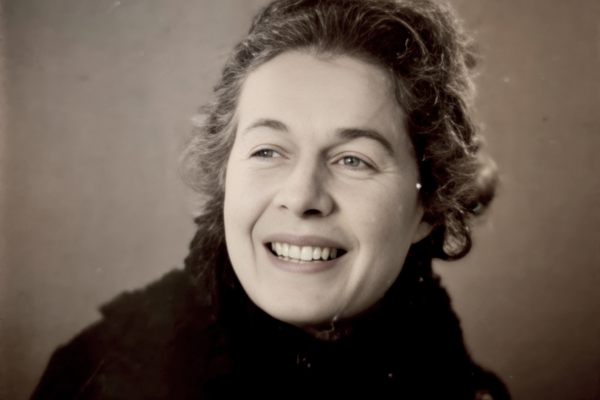How The Original “Tugboat Annie” Turned a $5 Rowboat Into an Empire

Thea Foss (Image: Courtesy of Foss Maritime Company)
In the preview for Tugboat Annie Sails Again, the 1940 film that follows the adventures of a tough-talking female captain with a rival named Bullwinkle, the writer Norman Reily Raine admits that he is often asked whether Annie is a real person. His response: “Annie took form as a symbol of the many American women who follow the sea.”
But that’s a bit of a dodge. Before MGM made the original Tugboat Annie movie in 1933, Annie was a character in a series of fictional stories that Raine wrote for the Saturday Evening Post. There is evidence that his most famous character was initially inspired by Thea Foss, a Norwegian immigrant who created a thriving boat business on Washington’s Puget Sound at the turn of the century.
Foss and her husband, Andrew, were both born in Norway. They met and decided to marry in Oslo (then called Christiana), before Andrew sailed across the Atlantic to make a life in America. He settled first in St. Paul, Minnesota, a popular destination for Scandinavian immigrants, where Thea joined him after working to earn the money for her passage across the ocean. They were married in the U.S. in 1881.
By the end of the decade, though, the couple decided to move further west, to Tacoma, Washington, then a booming port city at the end of the Northern Pacific Railroad. Andrew went first; Thea followed almost a year later, in 1889, with their three small children. After a tough ride on a bare-bones train, they arrived at their new home: a “float house” on the Puyallup River that Andrew had built himself, buoyed on cedar logs. They would live on the water.
The Foss family didn’t have much money–not long after Thea arrived, her husband left for a two-month job further north. While he was gone, she was given the opportunity to buy a beaten-up row boat, and she took it, even though it meant spending five whole dollars, a significant financial hit for the family. But after she refurbished it, she was able to sell it at a profit—some reports say she sold it for $10, others, for $15.
Either way, Thea more than made back her money. She used the profit to buy more boats and by the time her husband returned from his assignment, she had made $40 in the boat business.
From that first boat, the Fosses built a fleet. For years, they rented row boats to people going on picnics and other excursions. They would also provision larger ships and ferry the crew from land. When the rowboat businesses started declining, they upgraded their boats and started hauling logs. After 15 years in business, they had 10 launches, an oil-powered boat that could carry 60 people, and a rescue craft.
Foss was a smart business manager—“absolutely honest but shrewd,” as her son put it—but it was her husband who loved boats. Thea was actually afraid of the water.
Of course, there are differences between the character of Tugboat Annie and the real woman, Thea Foss. Annie’s husband has a problem with alcohol, and their business is struggling somewhat. By the second movie, Annie’s a widow. The rough-and-tumble film sailor is also much more aggressive than the entrepreneurial Foss was said to have been.
Ultimately, Raine did disclose that Thea Foss and Tugboat Annie were connected. The author was friendly with her son, Wedell Foss, although he never met Thea. He didn’t begin writing the Tugboat Annie stories until four years after Foss died, in 1927. But “she came to to my mind when, lecturing at the University of Washington, I decided to write a story of a woman tugboat captain.”
There’s one more echo between reality and fiction. Thea’s family also happened to include an Annie. It was the cow, who reportedly would guide boats through the fog with the sound of her mooing.



![Anne Bonny and Mary Read were both "convicted of piracy at a Court of Vice Admiralty [and] held at St. Jago de la Vega on the Island of Jamaica, 28th November 1720," according to the inscription accompanying this 1724 Benjamin Cole engraving from <em>A General History of the Pyrates</em>, by Daniel Defoe and Charles Johnson.](https://img.atlasobscura.com/5_kDHgENxQkc0QzZuPs_kICvmEP5JNCV8bcXDI7m5Do/rs:fill:600:400:1/g:ce/q:81/sm:1/scp:1/ar:1/aHR0cHM6Ly9hdGxh/cy1kZXYuczMuYW1h/em9uYXdzLmNvbS91/cGxvYWRzL2Fzc2V0/cy81NDQ0ZGNiMi1m/YzRkLTQ4YjUtYTVh/MC0xYzU2ZDliOTY0/YjY1NGNkMWI4MWEw/OTExMDM5ZTZfQW5u/ZSBCb25ueSBhbmQg/TWFyeSBSZWFkIC0g/RmVtYWxlIFBpcmF0/ZXMgaW4gMTgwMHMu/anBn.jpg)







Follow us on Twitter to get the latest on the world's hidden wonders.
Like us on Facebook to get the latest on the world's hidden wonders.
Follow us on Twitter Like us on Facebook